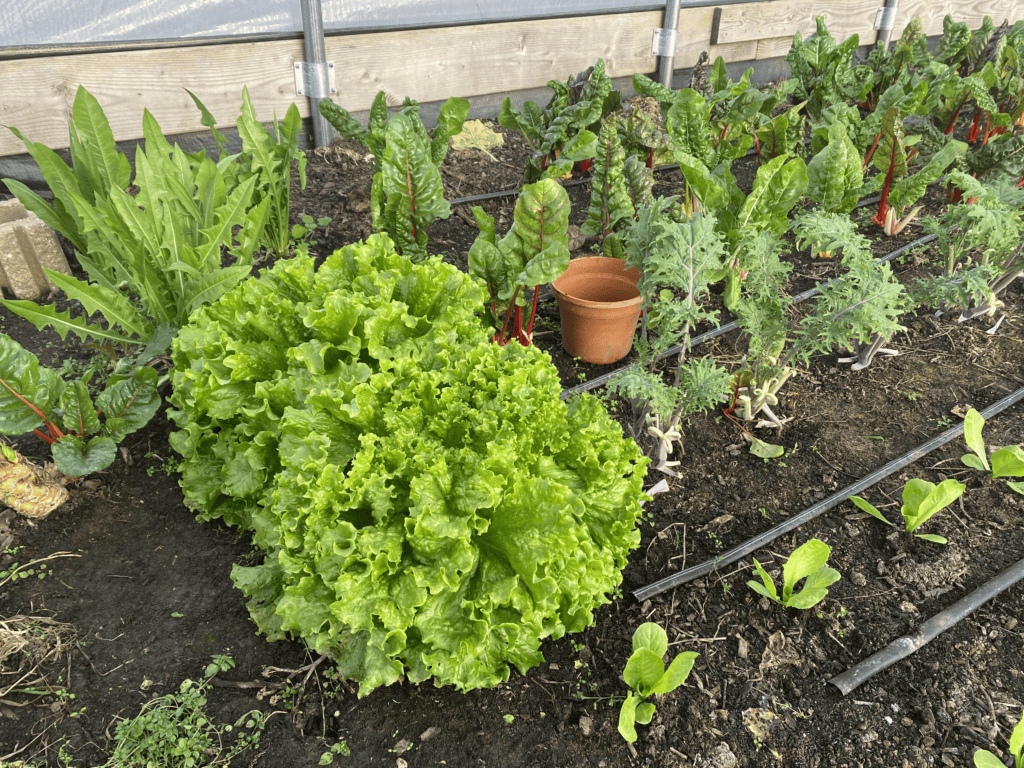This post may contain affiliate links. Probably doesn’t, but it might. It doesn’t cost you anything extra but if you use these links to buy something, we may earn a commission.
In recent years, the plant-based diet has become increasingly popular as people all over the world are making the switch to healthier and more sustainable food options. However, one of the most common concerns for those following a plant-based diet is ensuring that they are getting enough calcium, a vital mineral that is essential for strong bones and overall health.
Luckily, there are plenty of plant-based calcium sources to choose from, and with a bit of knowledge and planning, it’s easy to get all the calcium you need on a plant-based diet. In this ultimate guide, we’ll take a look at the best plant-based calcium sources, how much calcium you need, and how to incorporate these foods into your diet for optimal health. Whether you’re a seasoned vegan or just starting out on your plant-based journey, this guide has everything you need to know about plant-based calcium sources.
Table of Contents
Understanding Calcium and Its Importance in the Body
Calcium is a mineral that is essential for strong bones and teeth, but it’s also important for other bodily functions such as muscle function, nerve transmission, and blood clotting. The body cannot produce calcium, so it must be obtained through our diet or supplements. Calcium is stored in the bones and teeth, and when we don’t get enough calcium, our bodies will take it from these stores, which can lead to weakened bones and an increased risk of fractures and osteoporosis.
Calcium is crucial for people of all ages, but it’s especially important for children and adolescents who are still growing and developing. Older adults also need to consume more calcium to maintain bone density and prevent osteoporosis. Women who are pregnant or breastfeeding also need more calcium to support the growth and development of their babies.
Calcium Requirements for Different Age Groups
The recommended daily intake of calcium varies depending on age and gender. According to the National Institutes of Health (NIH), the recommended daily intake of calcium is as follows:
– Infants (0-6 months): 200 mg
– Infants (7-12 months): 260 mg
– Children (1-3 years): 700 mg
– Children (4-8 years): 1,000 mg
– Tweens and teens (9-18 years): 1,300 mg
– Adults (19-50 years): 1,000 mg
– Women (51-70 years): 1,200 mg
– Men (51-70 years): 1,000 mg
– Adults (71 years and older): 1,200 mg
It’s important to note that these are just general guidelines, and individual needs may vary depending on factors such as activity level, health status, and medications.
The Problem with Relying Solely on Dairy for Calcium
Many people believe that dairy products such as milk, cheese, and yogurt are the best sources of calcium, but this is not necessarily true. While dairy products are indeed high in calcium, they also come with a host of other health concerns. For example, dairy products are high in saturated fat and cholesterol, which can increase the risk of heart disease and other health problems. Additionally, many people are lactose intolerant or have a milk allergy, which can make it difficult to consume enough dairy products to meet their calcium needs.
Dairy is one of the top 10 most common allergens, and many people need to search out alternative sources of milk or cheese rather than dairy from cows.
Furthermore, dairy production is a major contributor to greenhouse gas emissions and environmental degradation. In contrast, plant-based sources of calcium are much more sustainable and have a lower environmental impact.
Top Plant-Based Sources of Calcium
Leafy Greens
Leafy greens such as kale, collard greens, bok choy, and broccoli are excellent sources of calcium. One cup of cooked collard greens contains 266 mg of calcium, which is more than a cup of milk (300 mg). Other calcium-rich greens include spinach, turnip greens, and mustard greens. Greens are also packed with other important nutrients, such as vitamin K, vitamin C, and fiber.
You can find fresh, great-tasting greens at your local farmers market or by shopping at a farm near you. Most small farms grow a variety of leafy greens throughout much of the year, giving you access to fresh greens in each season.
Nuts and Seeds
Nuts and seeds are another great source of calcium. Almonds, sesame seeds, chia seeds, and tahini (sesame seed paste) are particularly high in calcium. One tablespoon of sesame seeds contains 88 mg of calcium, while one ounce of almonds contains 75 mg. Nuts and seeds are also rich in healthy fats, protein, and fiber.
Legumes
Legumes such as beans, lentils, and chickpeas are not only high in protein and fiber, but they’re also a good source of calcium. One cup of cooked white beans contains 161 mg of calcium, while one cup of cooked chickpeas contains 80 mg. Legumes are also versatile and can be used in a variety of dishes, such as soups, stews, and salads. Legumes have many nutritional benefits and are low in caloric input.
Fruits
Oranges, apricots, figs, kiwi, blackberries, and rhubarb all contain calcium, making them a delicious addition to your diet. They also provide fiber, vitamins, and other minerals for your health. Prickly pears , mulberries, and papaya are some of the unusual fruits that also contain significant amounts of calcium. Whether fresh, dried, or in juice form, these fruits can all add essential nutrients to your meal planning.
Fortified Foods
Fortified foods such as plant-based milk, tofu, and orange juice are also good sources of calcium. Many plant-based milk varieties, such as almond or soy milk, are fortified with calcium and other nutrients. One cup of fortified soy milk contains 300 mg of calcium, which is the same as a cup of dairy milk. Tofu is another good source of calcium, with a half-cup serving containing about 250-300 mg. Fortified orange juice is also a good option, with one cup containing about 350 mg of calcium.
Calcium-Rich Meal Ideas and Recipes
Incorporating plant-based calcium sources into your diet can be easy and delicious. Here are some meal ideas and recipes to get you started:
– Smoothies: Blend together leafy greens, fruit, and fortified plant-based milk for a calcium-rich breakfast or snack.
– Salads: Add calcium-rich greens such as kale or spinach to your salads, and top with nuts or seeds for added crunch and calcium.
– Stir-fries: Use tofu as a protein source in your stir-fries, and add plenty of veggies for a calcium and nutrient-packed meal.
– Soups: Use calcium-rich legumes such as chickpeas or lentils in your soups for added protein and calcium.
– Snacks: Make your own calcium-rich trail mix by combining almonds, pumpkin seeds, and dried fruit.
10 Smoothie Recipes for Strong Bones | Vibrant Happy Healthy
How To Build a Healthy Trail Mix – The Healthy Maven
Chilli and garlic-spiced kale crisps recipe – BBC Food
Vegan tofu katsu curry recipe – BBC Food
Kale and quinoa salad with orange tahini dressing recipe – BBC Food
Here’s a simple recipe for a calcium-rich smoothie:
#### Green Smoothie
– 1 cup almond milk (fortified with calcium)
– 1 banana
– 1 cup spinach or kale or chard
– 1 tablespoon chia seeds
– 1 teaspoon honey (optional)
Blend all ingredients together until smooth and enjoy!
Combining Plant-Based Calcium Sources for Optimal Absorption
While plant-based sources of calcium are abundant, it’s important to understand that not all sources are created equal. Some foods, such as spinach, contain high levels of oxalates, which can interfere with calcium absorption. This means that while spinach is a great source of calcium, you may not absorb all of it. Kale or chard could be better options for calcium that you can absorb more easily.
To ensure that you’re getting the most calcium possible from your plant-based diet, it’s important to combine calcium-rich foods with those that are high in vitamin D, magnesium, and vitamin K. Vitamin D helps the body absorb calcium, while magnesium and vitamin K are important for bone health.
For example, pair leafy greens with nuts or seeds, as the healthy fats in nuts and seeds can help the body absorb calcium. Additionally, pair foods high in vitamin D, such as fortified plant-based milk, with calcium-rich foods for optimal absorption.
Calcium Supplements for Plant-Based Eaters
While it’s possible to get all the calcium you need from your diet, some people may choose to take calcium supplements as an added precaution. Calcium supplements are available in many forms, including tablets, capsules, and chewable tablets.
When choosing a calcium supplement, look for one that contains calcium citrate or calcium carbonate, as these forms of calcium are more easily absorbed by the body. It’s also important to take calcium supplements with food, as this can help with absorption.
However, it’s important to note that taking too much calcium can be harmful, and it may increase the risk of kidney stones and other health problems. It’s always best to consult with a healthcare professional before starting any new supplement regimen.
3 Calcium Myths Debunked
There are many myths surrounding calcium and its sources, so let’s take a moment to debunk some of the most common ones:
– Myth: You need to drink milk to get enough calcium. While dairy products are a good source of calcium, they’re not the only source. There are plenty of plant-based calcium sources to choose from.
– Myth: Plant-based calcium sources aren’t as easily absorbed by the body. While some plant-based sources of calcium may not be as easily absorbed as others, combining calcium-rich foods with those that are high in vitamin D, magnesium, and vitamin K can help with absorption.
– Myth: You need to take a calcium supplement to get enough calcium. While supplements can be a helpful addition to your diet, it’s possible to get all the calcium you need from your diet alone.
Conclusion – Embracing a Plant-Based Calcium-Rich Diet
It is important to consider your calcium intake at every age. Sufficient calcium combined with protein and exercise is essential for bone health. Boost your calcium intake with a variety of leafy greens, fruits, nuts, seeds, and legumes to stay healthy. Always consult your doctor regarding calcium supplements or concerns about osteoporosis. You can track your calcium intake with a free app such as Cronomoter, Cronometer: Eat smarter. Live better., by logging your food for a few days to make sure you are getting enough calcium in your meals.
In conclusion, getting enough calcium on a plant-based diet is easy and delicious. By incorporating leafy greens, nuts and seeds, legumes, and fortified foods into your diet, you can ensure that you’re getting all the calcium you need for strong bones and overall health. Remember to combine calcium-rich foods with those that are high in vitamin D, magnesium, and vitamin K for optimal absorption, and consider taking a calcium supplement if you’re not getting enough from your diet alone. With a bit of knowledge and planning, you can embrace a plant-based calcium-rich diet that supports your health and the health of the planet.
Happy eating!
Additional resources:
Cronometer: Eat smarter. Live better.
Top 10 Vegan Sources of Calcium (healthline.com)
50+ Plant-Based Foods Rich in Calcium (www.plant-based.org)





